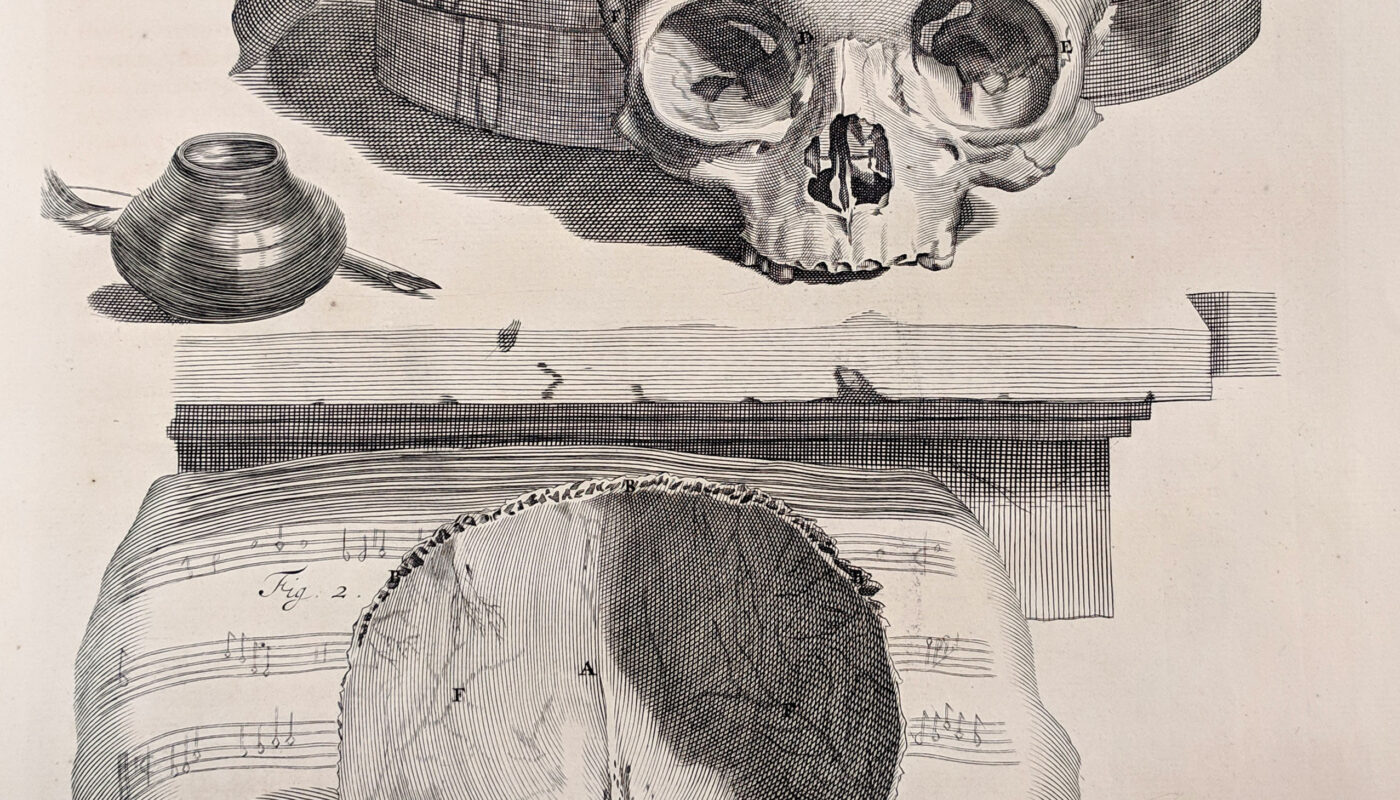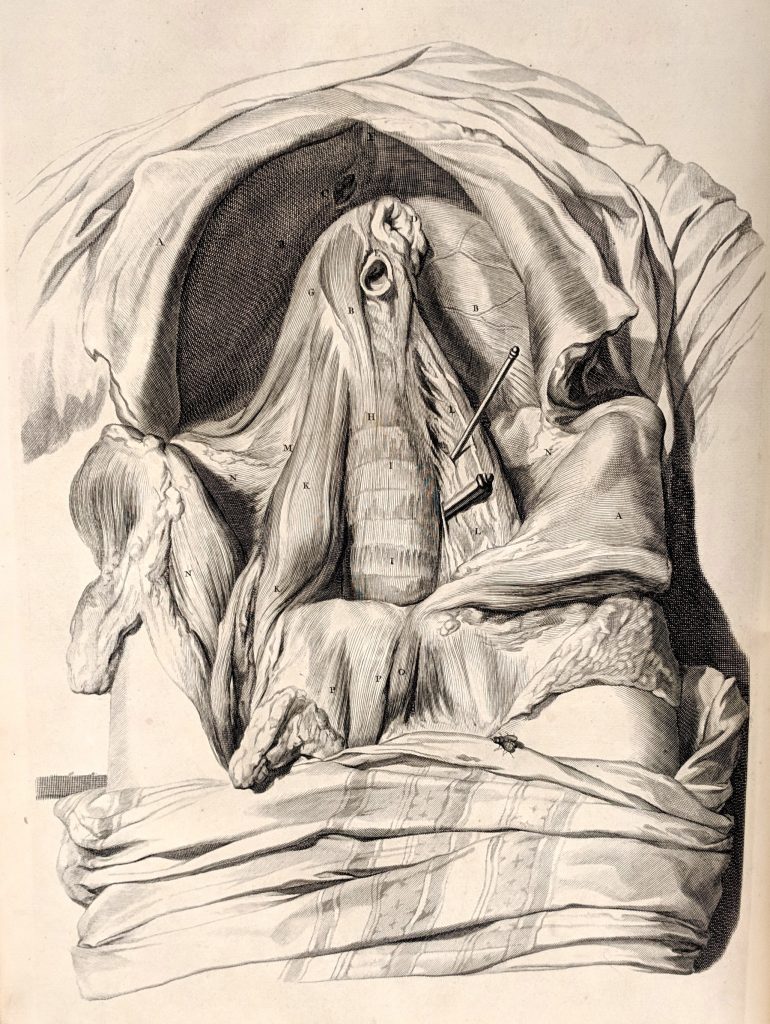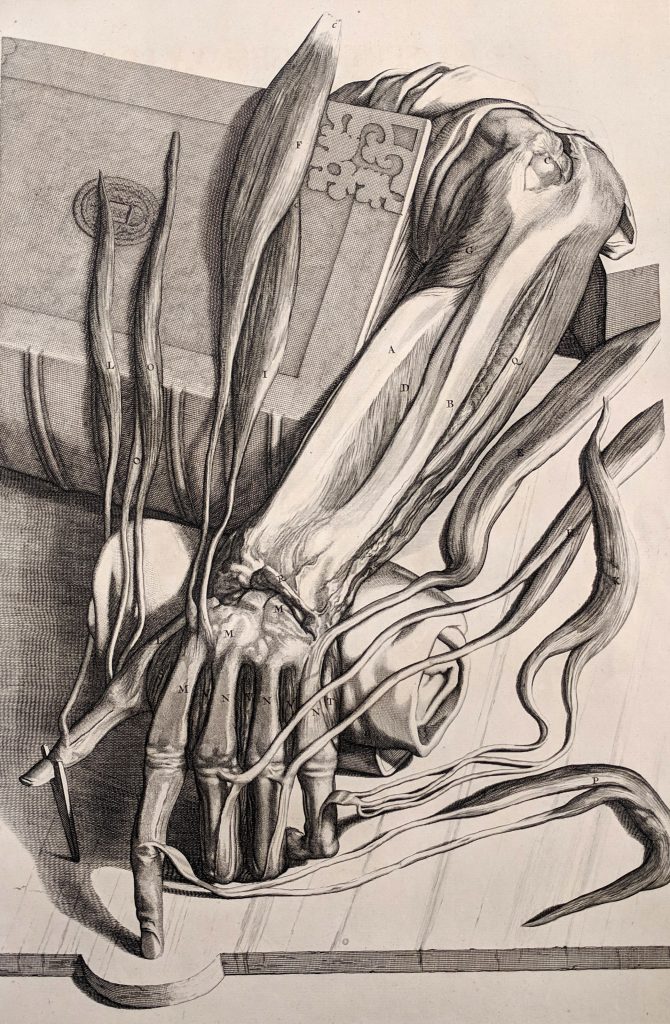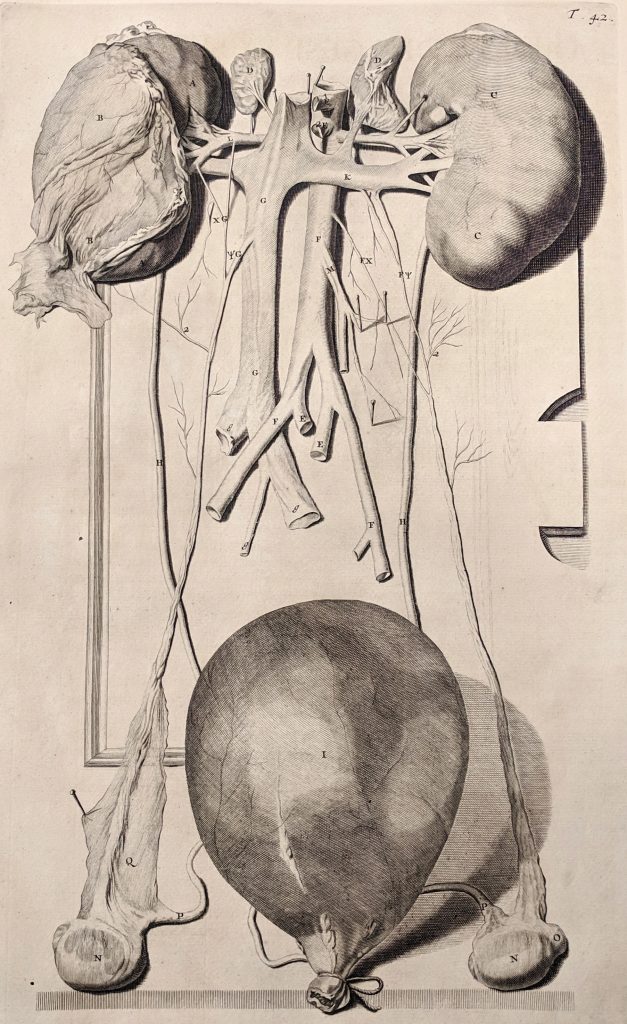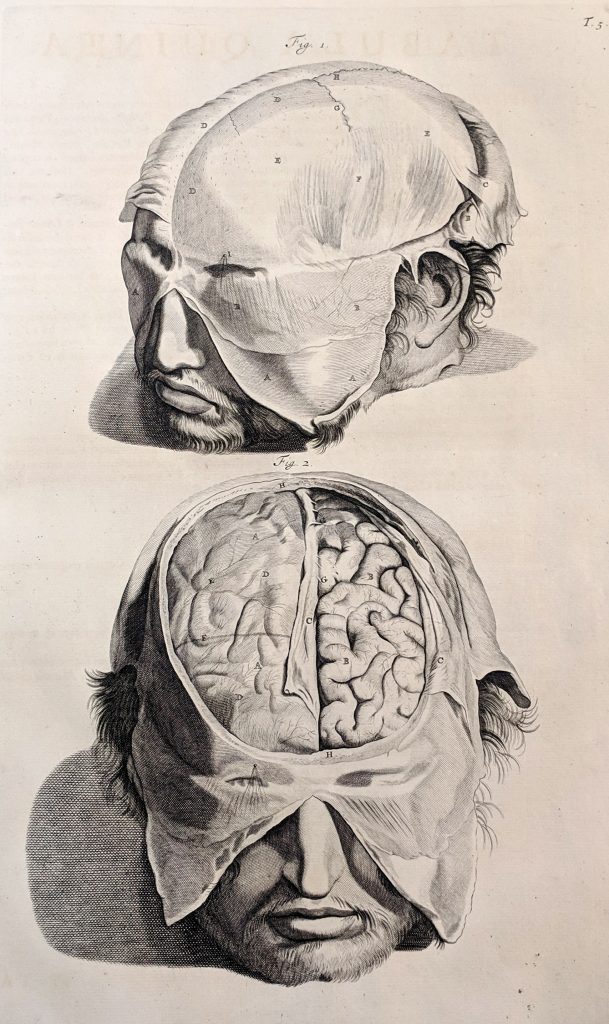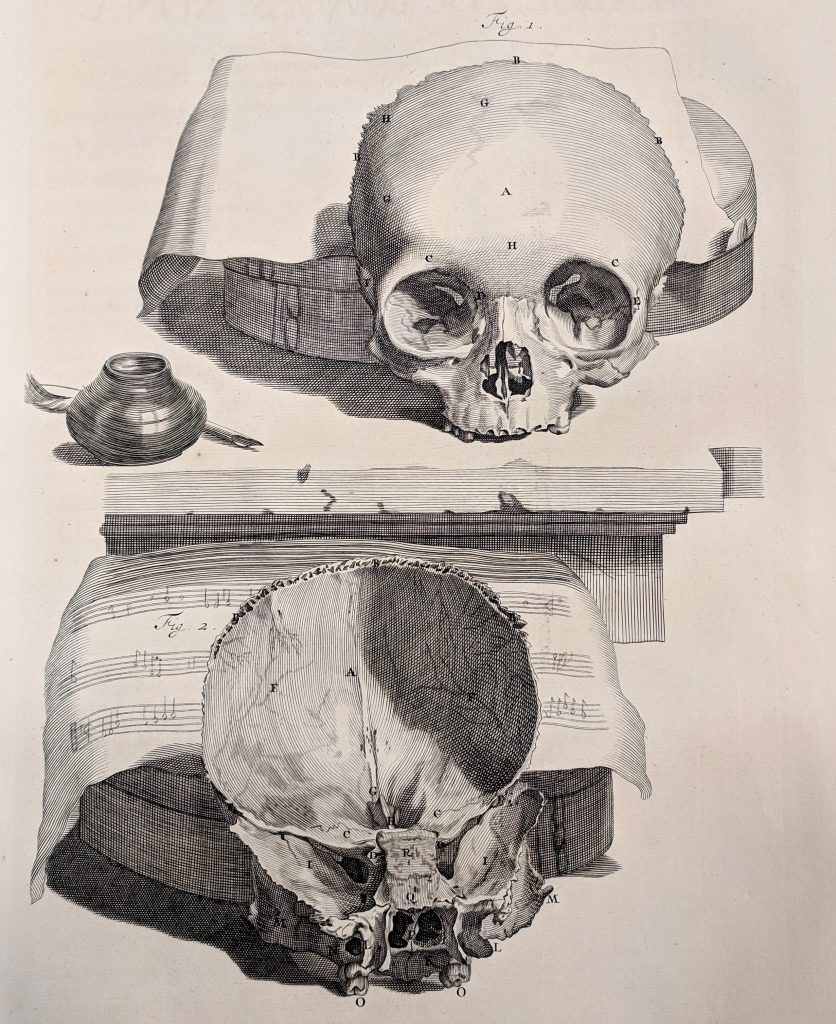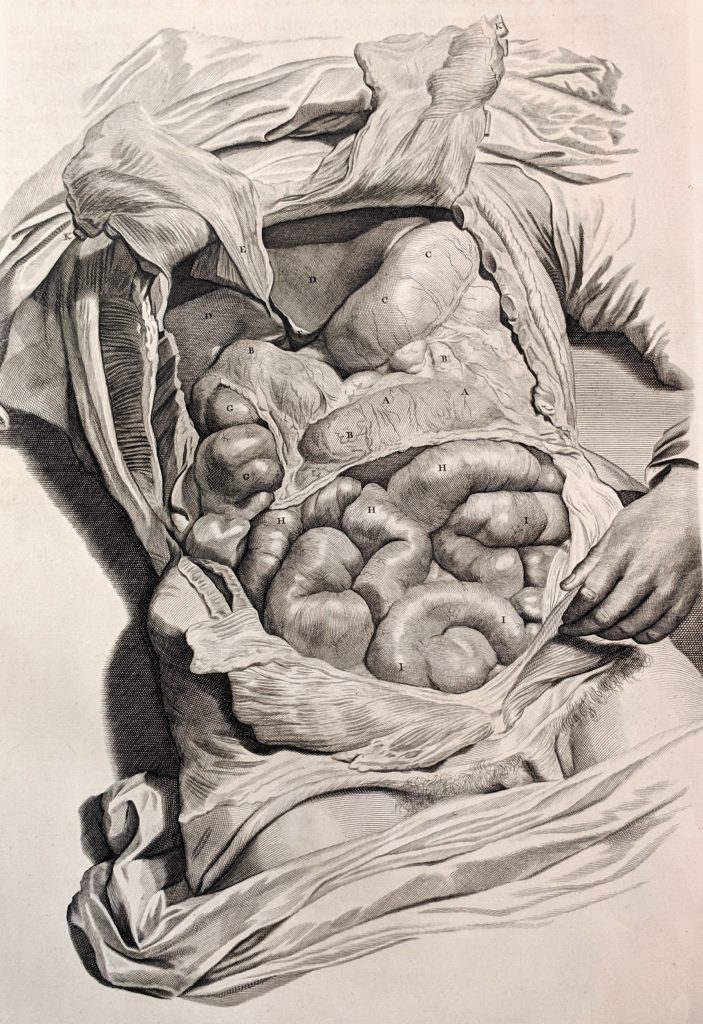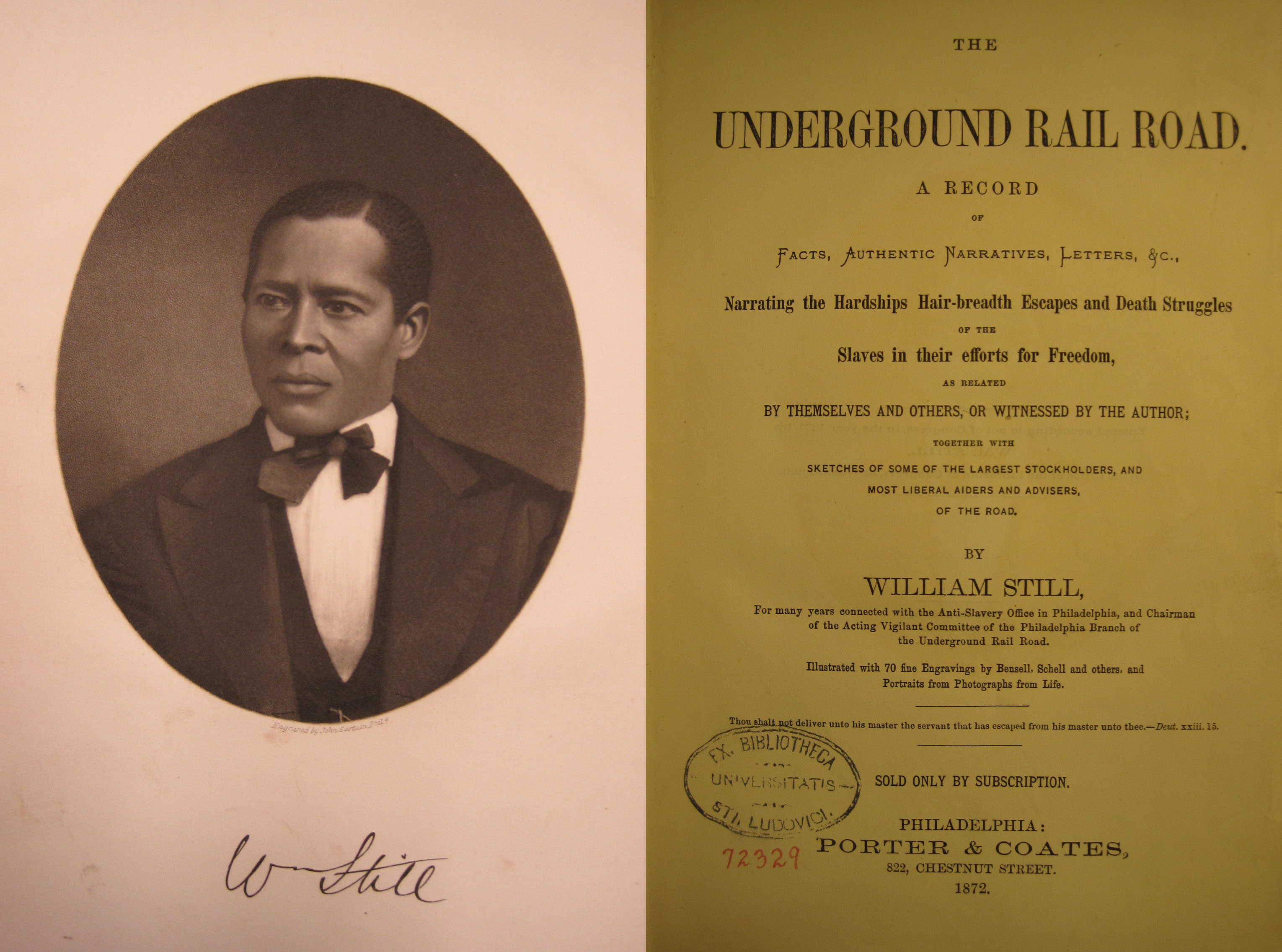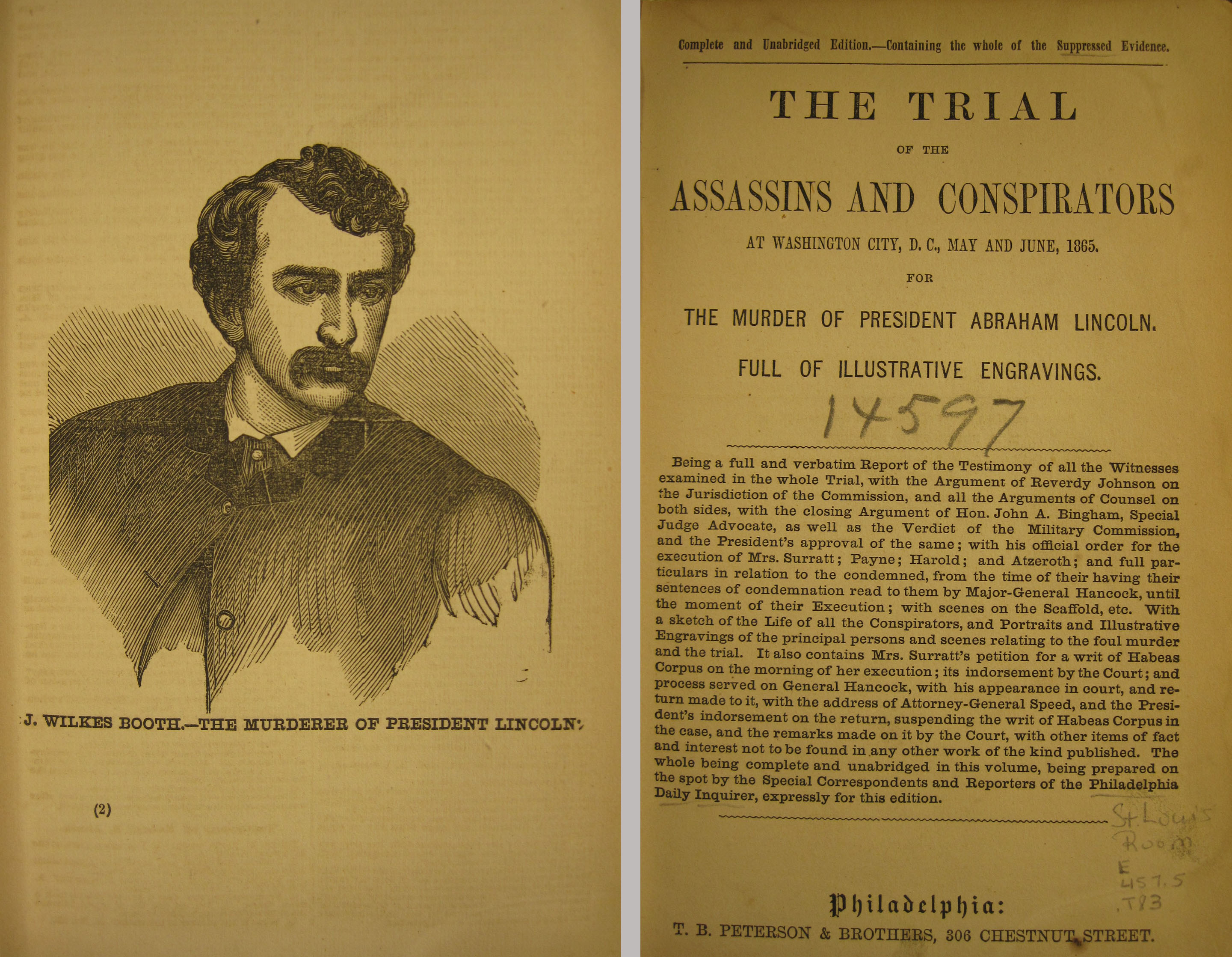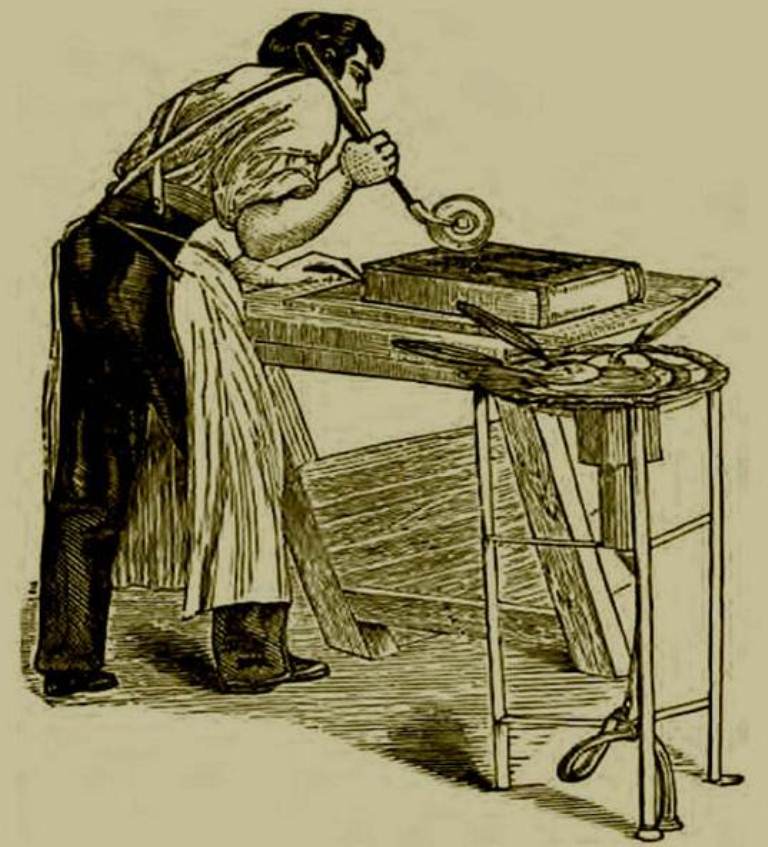The Anatomy of Humane Bodies (1698) by the English surgeon and anatomist William Cowper (1666–1709) is one of the most visually striking and controversial medical books ever published. Its engravings show individualized cadavers in a state of dissection, a departure from the classic depiction of the anatomical figure as idealized sculpture. Special attention is paid to the tools used for the examination and dissection of bodies, emphasizing the meticulous and manual aspects of the process, as well as creating a sense that the viewer is inside the operating theater alongside the surgeon. Objects and surfaces are represented in a naturalistic manner, but also with an artifice that invokes Dutch still life painting. Arrangements of drapery focus the viewer’s gaze on the inner workings of an opened abdomen or the sinewy structure of a limb. Everyday objects like books, jars, and even insects bring scale and balance to the compositions. These artistic choices blur the line between medicine and fine art, moving the anatomical illustration beyond the realm of educational tool.
These compelling engravings, however, were made originally for another book. The artist designer Gérard de Lairesse (1640–1711) was a Dutch painter influenced by Rembrandt and Poussin, and the engraver was Abraham Blooteling (1640–90). The author was the Dutch physician Govard Bidloo (1649–1713), whose Anatomia humani corporis was published in 1685. Bidloo’s anatomy sold so poorly that his publisher tried to recoup his losses by selling sheets of the engravings pulled from the copper plates to Cowper, who used them in his own work. Bidloo accused Cowper of plagiarism, leading to a famous and vitriolic exchange of pamphlets, the “Bidloo affair.” Complicating matters was the fact that Cowper’s English publishers had simply pasted a label with the new title and author over Bidloo’s name on the engraved title page! But Cowper’s text was original and valuable, and the book became a standard work, republished in English and European editions through 1750.
This copy from Special Collections is a later edition from 1739, translated into Latin, but still using the beautiful engravings from Bidloo’s original 1685 Anatomia.
